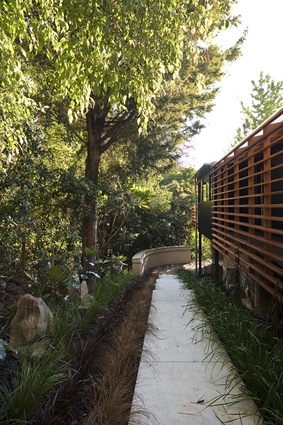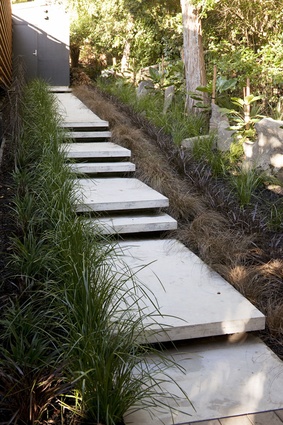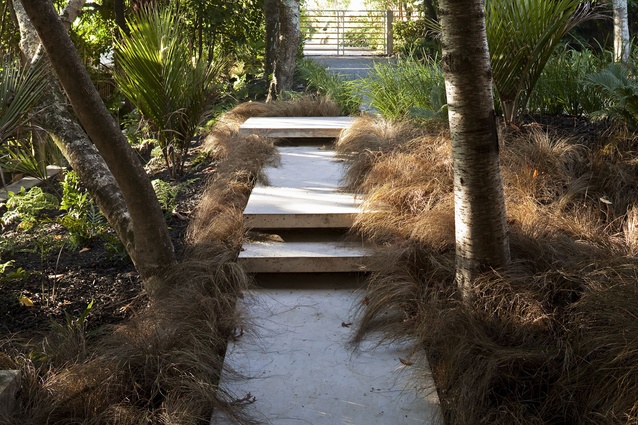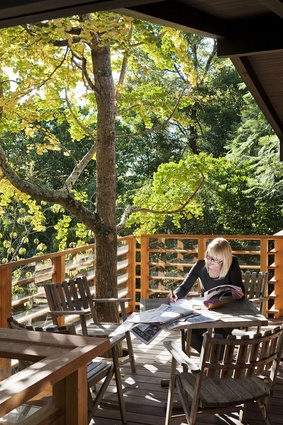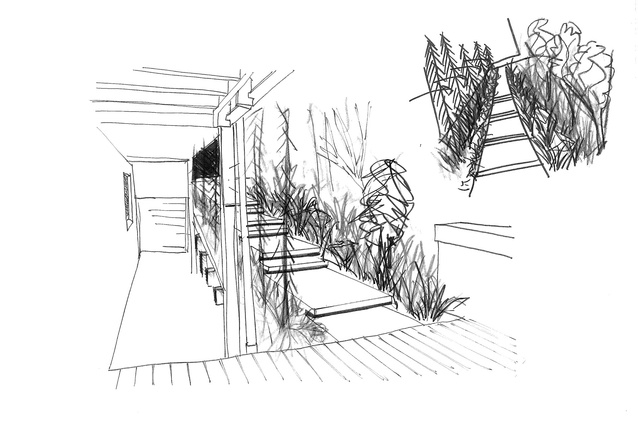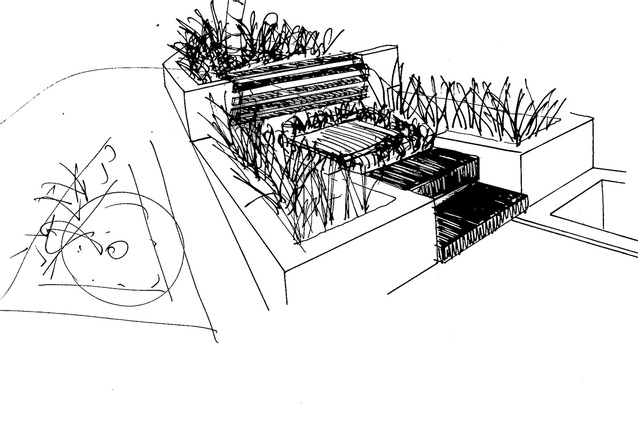Glade house
In a suburb typified more by a preference for box hedging we find a suburban glade and, in the clearing, a renovated home, married to the landscape.
It‘s not hard to see why this Remuera house was nicknamed ‘Glade’ for it sits ring-fenced by stands of trees in the suburban equivalent of a forest clearing. This is a place where sunlight, especially resolute and intense when beaming in from the northwest, faces off with mature foliage, before pushing through for some dappled interplay on the structure beyond.
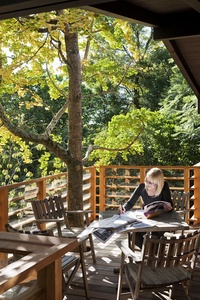
The house is a renovated ’70s number now, of course, not obviously of that decade. With its façade treatment of finely detailed horizontal yellow-cedar louvres (“pure and straight”), it hints at the modern but has a timeless appeal – and an arboreal aesthetic more commonly found west of the city. The weatherboards were retained and the brickwork was plastered, but it was a “thorough renovation”, says Campbell Strachan, from SGLA, on the work undertaken by SGA, his father’s practice, the architectural counterpart to his, newer, landscape firm, which undertook the ground work here.
Perhaps the more-exotic species of planting that surround the house are a giveaway to its actual locale. Those in the east are, perhaps, less singular in their appreciation for native planting. Initially, says Strachan, the landscape was overgrown, and ripe with bougainvillea and flowering tropical plants.
“It was like a flowering jungle in a way, and there were also a lot of English and introduced species nestled in there, which was one of the first things we really talked about with the client – stripping it back and making it feel more native,” he says.
“There are a few dominant introduced species, but the whole south of the site is mostly self-seeded nikau, there are also a lot of ferns and bush ground covers, as well as pseudopanax and grisilinea, which were popping up naturally – probably bird dispersed and wind-dispersed from the clipped and manicured gardens that surround the site.”
Strachan, I find, is a convincing spokesperson of things indigenous. After our chat I’m ready to head home and exclusively replant my backyard in varieties of pseudopanax, a favourite of his. Planted en masse at Glade, the defined vertical stems of the lancewood make a nice counterpoint to the horizontality of the architecture. However, the exotic species were not all subjected to extreme prejudice. A mature gingko, for instance, pops through a hole in the upper level’s deck, and that plant in particular, with its horizontal branching habit, providing some cues to the resulting architectural interventions.
“I think one of the ideas that I spoke to Martin (Varney, the project architect) about was to have a drive from the gingko. If you look at a gingko, it’s almost like a big bonsai in that it’s got quite horizontal limbs, and they create quite flat platforms.”
Overall, Strachan says the landscape works were about trying to create a modern transition into this home that still carried some of the nicest characteristics of the house. “It was also about not being too strong,” he says. That recognition of balance is perhaps one key to the great success of this landscape. The house is layered, and appears to float in its setting. The surrounding landscape is naturally organised, while the hard landscaping elements provide enough – but not too much – structure. One of the most notable landscaped elements is on the southern side of the house – a wonderful 14m-long path broken down into smaller parts and organised so that each concrete slab appears to float above the one it precedes. The repetition of the horizontal is a neat tie with the house. The path, gently sloping, “throws out peaks” to reduce the incline.
“You can deal with a concrete path in a 1000 different ways, but if you put a little more detail into the breaks, create a little more shadow, then it breaks it up,” says Strachan. “If you’ve got a 14m strip of concrete, then no matter how you plant it out it’s still a 14m strip of concrete.”
Naturally there was a another key to success at Glade, one of those wondrous things – excellent clients. As Strachan puts it: “From a building point of view, you really need an understanding client to achieve all this.”


